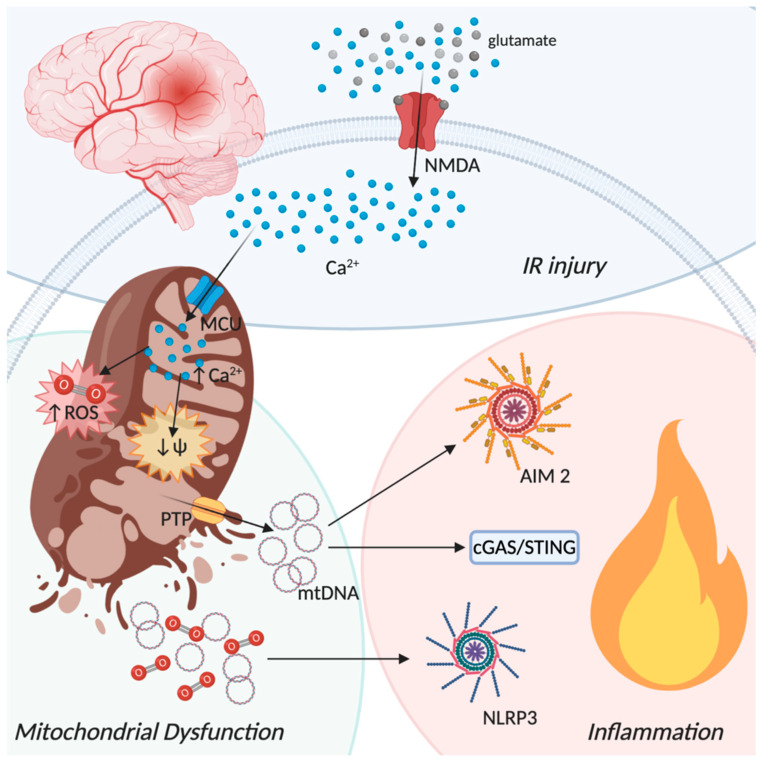Figure 3.
Ischemic-reperfusion injury from a mitochondrial perspective. Oxygen depletion occurring during an ischemic event lead to neuronal membrane depolarization with glutamate release in the extracellular space. Glutamate binds to N-methyl-D-aspartate (NMDA) receptors promoting a strong influx of Ca2+. The increase of cytosolic Ca2+ activates the mitochondria calcium uniporter (MCU) leading to mitochondrial depolarization and increased production of reactive oxygen species (ROS) with the consequent opening of the permeability transition pore (PTP) and the final disruption of the mitochondrial membranes. mtDNA and ROS release in the cytoplasm drives the inflammatory process by the activation different pathways, such as AIM2 and the NLRP3 inflammasomes and the cGAS-STING dsDNA sensing machinery. Created with BioRender.com.

